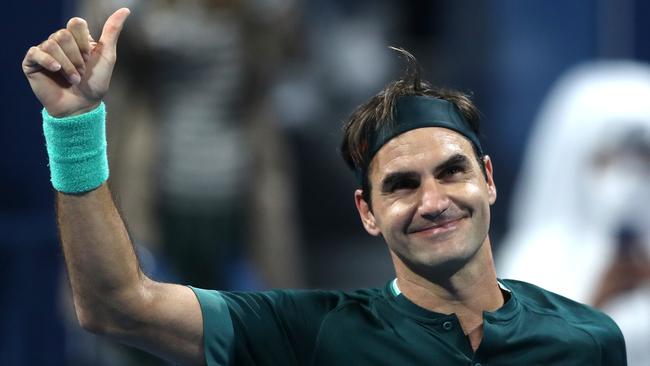Roger Federer will undergo surgery on a career-threatening knee injury
Swiss superstar Roger Federer faces a significant test to return to tennis after being forced to undergo a third knee operation.

Shortly before Roger Federer withdrew from the US Open on Monday in a significant blow for tennis, Andy Murray noted reality was now catching up with even those capable of the extraordinary.
The bodies of the very best, Murray said, “are breaking down”. As diligent as Federer has always been in his preparation and rehabilitation, it is proving the case with him.
There is great concern about the playing future of the Swiss champion after he confirmed he will require surgery yet again on a knee that he injured during a difficult grass court season.
Now 40, the 20-time major champion will be “on crutches for several weeks” and absent from tennis for several months at the very least.
“I want to give myself a glimmer of hope to return to the tour in some shape or form,” he said.
“I am realistic. Don’t get me wrong. I know how difficult it is at my age to go through another surgery.
“I will try it. I want to be healthy, I want to be running around.”
The revelation, though not surprising given he was forced to miss the Tokyo Olympics, was greeted with gloom by peers and fans alike, fearful he might not grace a court again.
The question now is whether he can return at all and whether the price for Federer, who has four children, is worthwhile as he looks to a future beyond the baselines around the world.
Acclaimed journalist Christopher Clarey has released a detailed examination of Federer’s life called The Master.
He told The Weekend Australian on Saturday the timing was right to release the book because he felt the “main body of work” by Federer, who has had two previous knee operations, is complete.
Federer and the Williams sisters reached stratospheric heights in their careers but, as tennis history attests, they are now at the outer limits in terms of the ability to sustain excellence.
A former tour rival in Mardy Fish noted: “Going out on your own terms is something every athlete wants. (It) happens less than you think. Speedy recovery, my friend.”
Fish is a year younger than Federer but retired in 2015. The last grand slam singles appearance of Lleyton Hewitt, his first great rival, came in Melbourne in 2016.
Pat Rafter, who was Federer’s first opponent in a grand slam in Paris in 1999, was forced into retirement by injury aged 30 a year before the Swiss won his first Wimbledon in 2003.
Andre Agassi excelled in his 30s, but went through torture each morning in order to get his body rolling enough to work through another day.
Murray is well-versed in dealing with career-threatening injuries.
Rafael Nadal’s foot has troubled him since he was a teenager and has flared up once again. Whether he appears on the baseline at Flushing Meadows is uncertain.
Even Novak Djokovic, who appears certain to finish with the most grand slams of all, has endured body battles and is choosing his tournaments judiciously to preserve his best for the majors.
Federer had 14 months off between the Australian Open in 2020 and a return to the tour in Doha in March because of a knee injury.
Soreness, which is scarcely a surprise given his time out from the tour and the fitness required just to get back on court, forced the eight-time Wimbledon champion to miss another couple of months.
While his form was reasonable in Paris, where he withdrew after the third round, and at Wimbledon, he was thrashed in a quarter-final when clearly hindered. He has played just 19 matches since November 2019.
The ease of Federer’s movement, and the grace with which he plays, belies just how swiftly he covers the court when at his best, with his ability to defend as critical as his aggressive attacking play.
Maintaining that speed around the court is crucial to success. So, too, retaining the power and drive into both his ground strokes and also his phenomenal serve. A half-step slow, or a dip in drive, and he will be vulnerable.
Federer will rely on masterful trainer Pierre Paganini, who has worked with him since he was a teenager, to plot a return to full fitness and power.
Building strength and stability in the knee, a joint so critical to every shot, will be the key to whether he plays again.



